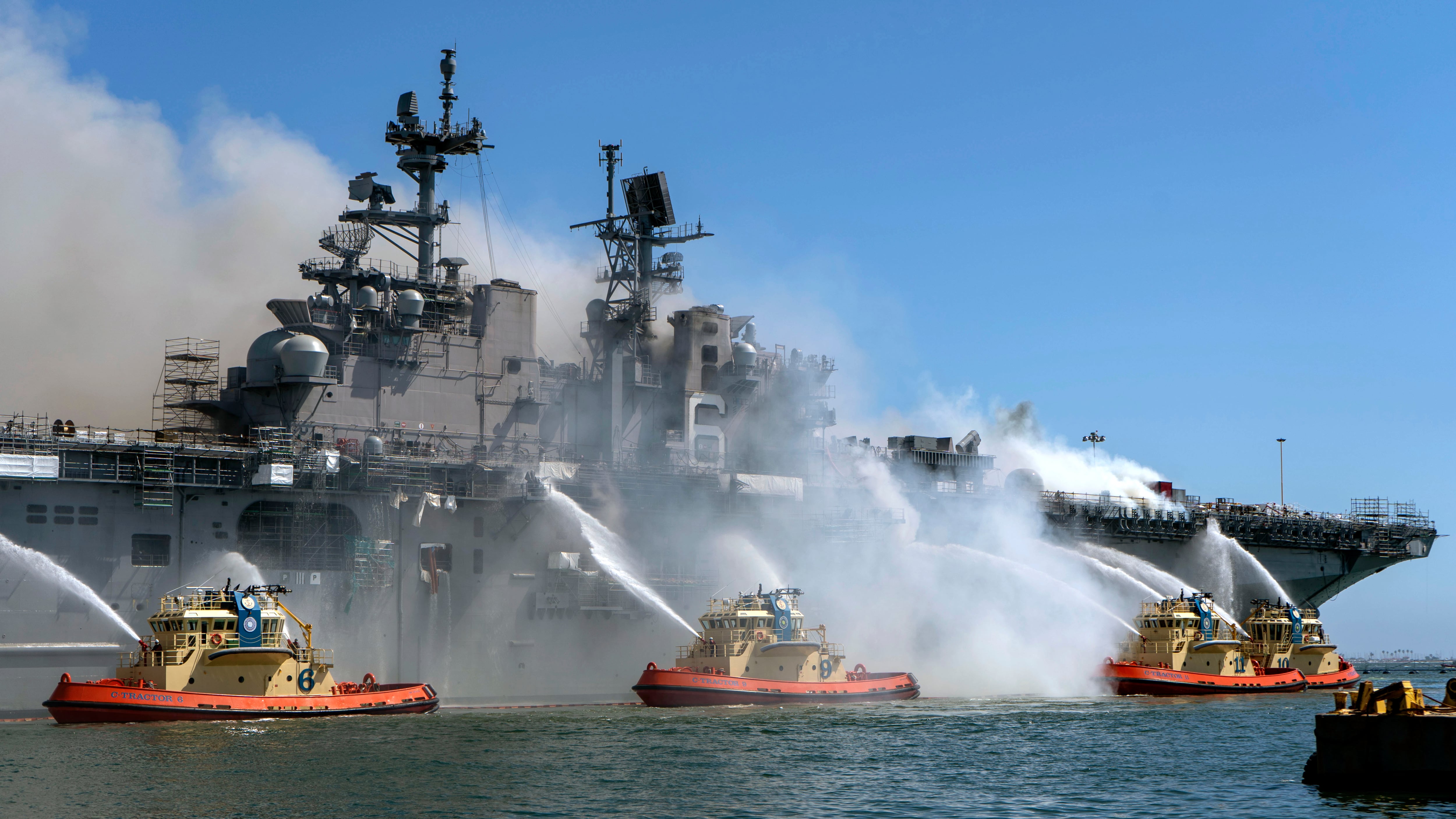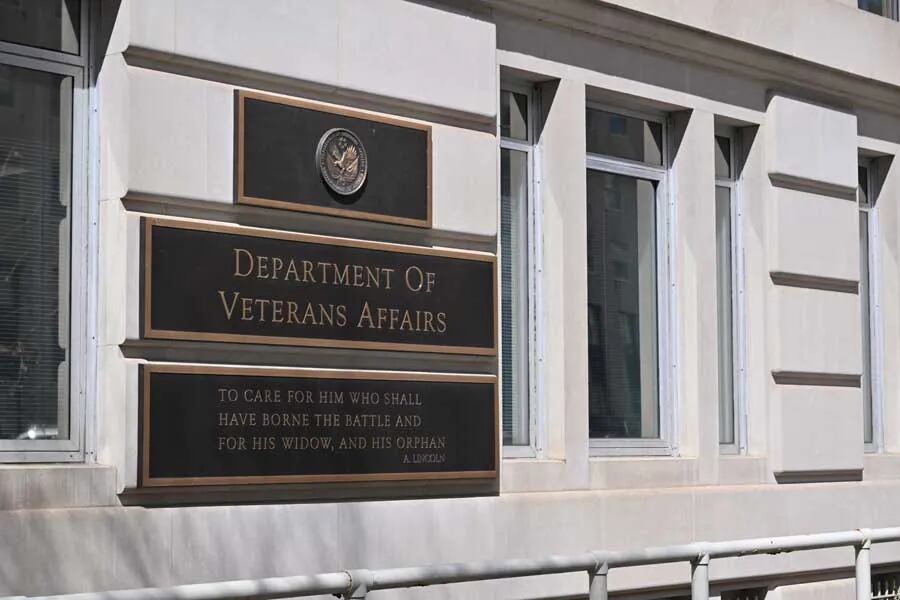Fires aboard Navy ships, especially those in maintenance, have cost the service billions of dollars since 2008 — yet the service hasn’t consistently implemented a system to collect and analyze lessons learned from these disasters, according to a Government Accountability Office report.
The auditors determined that between 2008 and 2020, the Navy reported $4 billion in damages due to fires on ships undergoing maintenance.
Two Navy ships had to be scrapped.
In May 2012, a major fire aboard the attack submarine Miami while it was undergoing maintenance at Portsmouth Naval Shipyard in Kittery, Maine, caused more than $700 million in estimated damages to its forward compartment, the report notes. Rather than pay for repairs, the Navy was forced to decommission the boat 10 years ahead of schedule.
Then in July 2020, the amphibious assault ship Bonhomme Richard, which was undergoing a maintenance availability in San Diego, caught fire and burned for four days, doing massive damage to the flattop’s flight deck, island, mast and lower levels.
The amphib had just completed $250 million worth of upgrades to support integration of the F-35B Lightning II at the time of the fire, one of four large-deck amphibs to be updated for the new aircraft.
Fixing it would have cost between $2.5 to $3.2 billion over five to seven years, service officials determined. Ultimately, the Navy decommissioned the ship in April 2021 and sent it off to Texas to be scrapped.
“After the loss of the USS Miami, the Navy realized that it could not afford another setback from a fire of this magnitude,” the GAO report states. “Navy officials recognized a need to raise the Navy’s standards and capabilities to improve fire safety, and to develop cost-effective solutions to improve fire prevention and detection, immediate response, and extended response for ships undergoing maintenance.”
Even so, nine additional major fires occurred aboard ships undergoing maintenance over the next decade.
“For example, in 2015 a fire aboard the USS Gunston Hall at the NASSCO Earl Shipyard in Portsmouth, Virginia, resulted in an estimated $26 million in repairs and extended the vessel’s maintenance period by 2 months,” according to the report. Further, in 2018, a fire aboard the USS Oscar Austin at the BAE Systems shipyard in Norfolk, Virginia, resulted in an estimated $75 million in damages, according to Navy officials.”
Since the Bonhomme Richard conflagration, the Navy has incurred at least $669,000 in damages from additional fire incidents during maintenance periods through December 2022, according to data from the Naval Safety Command.
The GAO auditors examined Navy documents and reports, best practices, policies and procedures, and fire safety training materials for the report. They also interviewed Navy fire safety and prevention officials and visited ships undergoing maintenance.
Ships in the yard are especially susceptible to fire since repairs involving welding, electrical sparks or other sources can ignite flammable materials in confined spaces. While the report found the Navy has organizations focused on collecting and analyzing data regarding fires, there is no uniform process currently in place across the fleet to examine this information and share lessons learned.
“Although the Navy has begun improving the collection of data related to fires aboard ships during maintenance in the Navy’s safety database, no organization is analyzing the broad effects of fires on the Navy’s operations and strategic resources,” the GAO report said. “Without conducting such analyses, the Navy will not have a complete picture of the magnitude of risks associated with ship fires.”
Moreover, although the organizations GAO interviewed collected lessons learned from fires — to include best practices, corrective actions, action items and recommendations — they had not “consistently used the approved Navy-wide system to store and share them.”
In addition, auditors found that the Navy “has not set service-wide goals, performance measures, and a process to monitor progress for its collective training efforts to improve fire safety and response,” the report said. “By establishing these practices service-wide, Navy leadership would have the information needed to determine the extent to which its training efforts are effective in reducing the incidence and severity of fires.”
As a result, the GAO recommended the Navy:
- Set up a process for consistently collecting lessons learned
- Guarantee that a single organization exists to analyze the effects of fires
- Establish service-wide goals, performance measures, and a process for monitoring and reporting progress for fire-safety training
The Navy agreed with all three GAO recommendations.
A spokesperson for the Naval Surface Force said the “safety of our ships and crews remain a top priority for the Surface Fleet.”
“We appreciate the GAO’s recommendations in this report,” said Cmdr. Arlo Abrahamson in an email to Navy Times. “We continue to implement lessons learned and measures focused on the optimization of fire safety during maintenance periods. Those efforts include more frequent and unannounced fire safety inspections, enhanced fire drills, increased collaboration with shipyard teams on fire safety, and greater empowerment of our afloat commands to identify and address fire safety hazards.”





